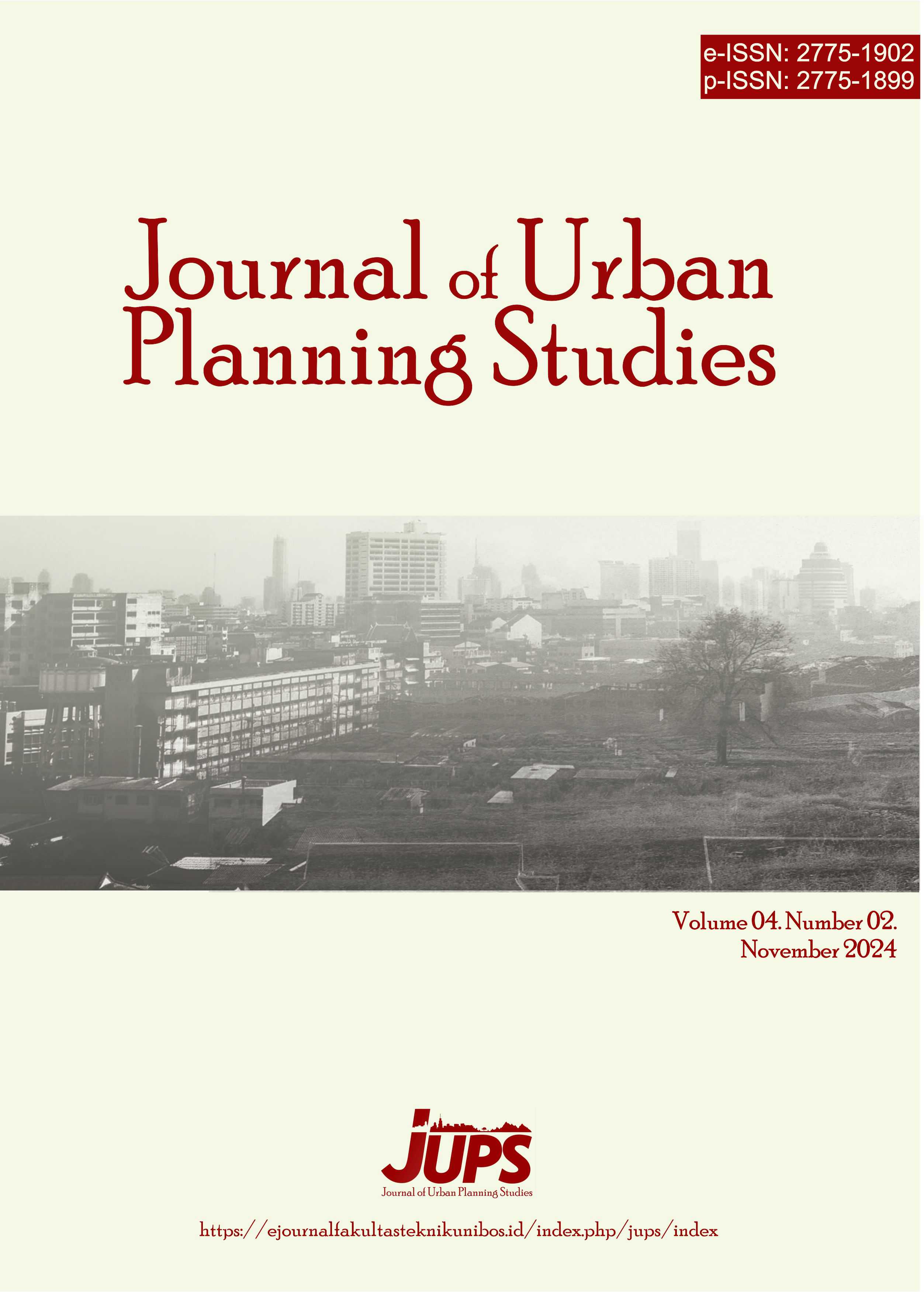Studi Pengoptimalan Tempat Pembuangan Akhir Balang, Kabupaten Takalar
DOI:
https://doi.org/10.35965/jups.v4i2.465Keywords:
Kondisi Eksisting TPA Balang, Kebijakan TPA, Pengoptimalan TPA BalangAbstract
The purpose of this research was conducted by the author to find out how to optimize the Balang landfill so that the Balang landfill is able to minimize all forms of impact caused by the existence of the landfill. The research location is in the Balang Landfill which has an area of 2.2 Ha with a Landfill of 0.7 Ha and a capacity of ± 60,000 m3. The Balang TPA is in the Balang Environment, Bontokadatto Village, South Polombangkeng District, Takalar Regency. In this study using a qualitative approach, which provides an explanation and description of the data that has been collected from the research object. The data collection process was carried out by means of direct observation, documentation and in-depth interviews with parties who had a role in the Balang TPA. Then the SWOT analysis method (Strenghs, Weaknesses, Opportunity, Threats) is used to determine how to optimize the Balang TPA. So that from the results of the analysis and observations that have been made, the authors found that the Balang TPA location is in accordance with the Takalar Regency spatial planning policy No. 6 Year 2012 which was enforced. And in terms of waste management at the Balang TPA, it already uses a controlled landfill system in accordance with Law Number 28 of 2008 in article 42 which is directed to close the TPA which is still using an open dumping system. However, in the Balang TPA location, there are problems, namely the growth of settlements around the TPA, air that is starting to be polluted, public health which is often disrupted due to bacteria and viruses, waste utilization has not been carried out, lack of counseling related to waste management, and has not implemented the waste sorting process before entering the landfill area. Therefore, for the optimization of TPA Balang based on the results of the SWOT analysis, points X and Y from the results of IFAS and EFAS are in quadrant I with values X = 0.93 and Y = 1.38. Which means the formulation of the strategy used is the SO strategy, namely utilizing the strengths possessed to get the opportunities that exist.
References
Ahmad Jazuli. (2015). Dinamika Hukum Lingkungan Hiddup dan Sumber Daya Alam Dalam Rangka Pembangunan Berkelanjutan. Jurnal Rechtsvinding. Pusat Pengkajian dan Pengembangan Kebijakan Kementerian Hukum dan HAM RI.
Faisal, B., Latief, R., & Taking, I. (2022). Analisis Penentuan Lokasi Tempat Pembuangan Akhir Di Kota Tidore Kepulauan. Journal of Urban Planning Studies, 3(1), 78-93.
I Made Laut Mertha Jaya (2021). Metode Penelitian Kuantitatif dan Kualitatif. Buku.
Kementerian Lingkungan Hidup dan Kehutanan (2021). Total Timbulan Sampah di Indonesia Pada Tahun 2021.
Peraturan Presiden Nomor 55 Tahun 2011 Tentang Rencana Tata Ruang Kawasan Perkotaan Mamminasata
Peraturan Daerah Nomor 6 Tahun 2012 Tentang Rencana Tata Ruang Wilayah Kabupaten Takalar.
Peraturan Bupati Kabupaten Takalar Nomor 65 Tahun 2018 Tentang Kebijakan dan Strategi Pemerintah Daerah Kabupaten Takalar dalam Hal Pengelolaan Sampah Rumah Tangga dan Sampah Sejenis Sampah Rumah Tangga.
PPSP (Percepatan Pembangunan Sanitasi Permukiman Kabupaten Takalar (2021). Data Timbulan Sampah di Kabupaten Takalar Pada Tahun 2021.
Rifaldi, R., Syafri, S., & Yahya, I. (2021). Evaluasi Pengelolan Persampahan Di Kota Enrekan Kabupeten Enrekang. Journal of Urban Planning Studies, 1(3), 256–263.
R. Mohamad Mulyadi, Mohamad Iqbal dkk. (2018). Konflik Pengelolaan Sampah di DKI Jakarta dan Upaya Mengatasinya. Jurnal Analisis Kebijakan Kehutanan Vol. 15 No. 2. Pusat penelitian dan Pengembangan Sosial, Ekonomi, Kebijakan dan Perubahan Iklim, Kementerian Lingkungan Hidup dan Kehutanan.
Undang-Undang Nomor 18 Tahun 2008 Tentang Pengelolaan Persampahan
Yani Sugiyani (2016). Sistem Pengambilan Keputusan Penentuan Lokasi Tempat Pembuangan Akhir (TPA) Sampah Menggunakan Metode Simple Addictive Weighting (SAW). Jurnal Sistem Informasi Volume. 3. Universitas Serang Raya.
Downloads
Published
How to Cite
Issue
Section
License
Copyright (c) 2024 Damayani Suardi, Muhammad Fuad Aziz, Muhammad Indris Taking

This work is licensed under a Creative Commons Attribution 4.0 International License.













